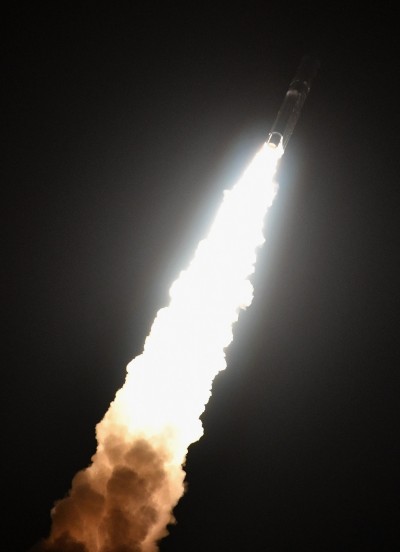An Ariane 5 rocket carrying two robotic explorers, separately developed by the Japanese and European space agencies, was launched Friday from the Kourou space center in French Guiana on a seven-year journey to Mercury.
The explorers developed by the Japan Space Exploration Agency and the European Space Agency will travel 9 billion kilometers to the planet closest to the sun, and orbit around it for about a year collecting data.

The joint Japan-European mission, named BepiColombo after Giuseppe "Bepi" Colombo, a mathematician who played a vital role in planning the multiple fly-bys of the first-ever probe to the planet, is intended to reveal the mysterious history of Mercury's formation and its internal structure.
JAXA's Mercury Magnetosphere Orbiter Mio, a 1.8-meter wide and 2.4-meter high octagonal column-shaped probe with an antenna capable of extending 15 meters, is designed to survey the planet's magnetic field and thin atmosphere.
ESA's Mercury Planetary Orbiter, whose main body is 2.4 x 2.2 x 1.7 meters in size and equipped with cameras and an altimeter, will examine the terrain of Mercury and search for minerals.
"JAXA has high expectations that the ensuing detailed observations on the surface and interior of Mercury will help us better understand the environment of the planet, and ultimately, the origin of the Solar System including that of Earth," JAXA President Hiroshi Yamakawa said in a prepared statement.
So far, only two space probes, both from the United States, have surveyed Mercury. Mariner 10 surveyed the rocky planet between 1974 and 1975, and Messenger between 2011 and 2015.
Among other things, those probes detected evidence of frozen water on Mercury.
"Beyond completing the challenging journey, this mission will return a huge bounty of science," ESA Director General Jan Worner said.











